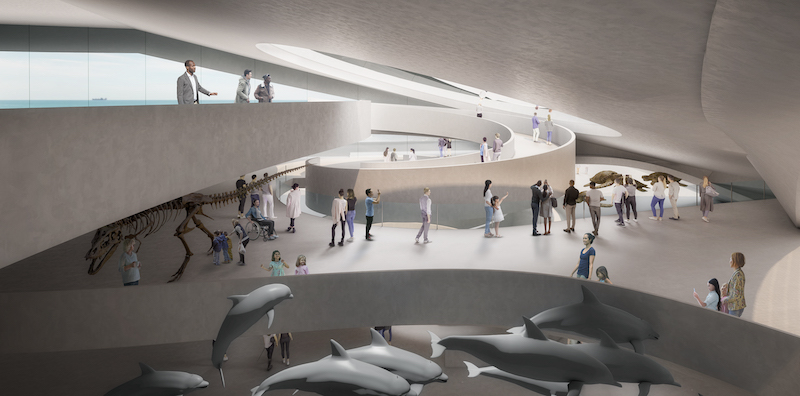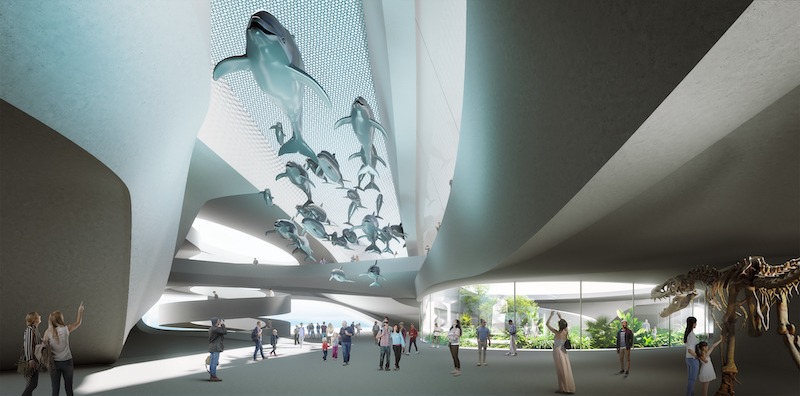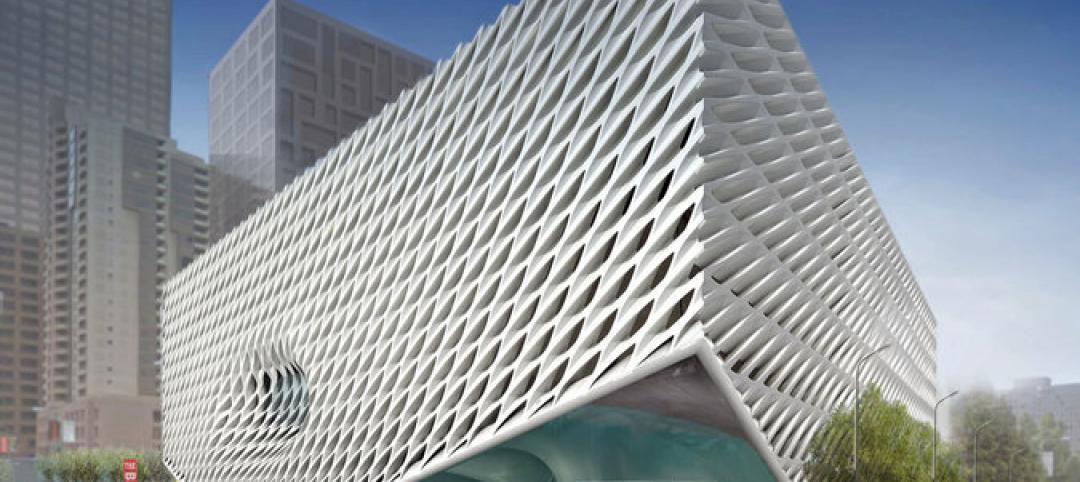The Museum of Science & History (MOSH) has selected DLR Group as the lead architect for the MOSH Genesis project on the Northbank of Downtown Jacksonville.
The new project will replace the current location on the Southbank of Downtown Jacksonville, where MOSH has been since 1969. Early projections show the new facility will be able to serve 58,000 students (a 50% increase over pre-pandemic numbers) and 469,000 visitors (a 168% increase) each year.

“MOSH will have a dramatic impact on the Jacksonville region, telling its unique story of human and natural history and culture, innovation and current science,” said DLR Group Senior Principal Paul Westlake, FAIA, who leads the firm’s Cultural+Performing Arts practice, in a release.

The new museum will comprise dedicated areas for exhibitions, classes, and events that will create an immersive experience reflective of Jacksonville’s history. The building will also incorporate a new space for the Bryan-Gooding Planetarium. The goal of the project is to reinforce MOSH’s role as a vital civic institution and a destination for accessible, immersive, and technologically advanced experiences.
DLR Group will work with kasper architects + associates and SCAPE on the project. The $85 million project is expected to take three years to build. Pre-construciton site work may begin as early as Q1 2022.
Related Stories
| Jun 18, 2014
Arup uses 3D printing to fabricate one-of-a-kind structural steel components
The firm's research shows that 3D printing has the potential to reduce costs, cut waste, and slash the carbon footprint of the construction sector.
| Jun 16, 2014
6 U.S. cities at the forefront of innovation districts
A new Brookings Institution study records the emergence of “competitive places that are also cool spaces.”
| Jun 13, 2014
First look: BIG's spiraling museum for watchmaker Audemars Piguet
The glass-and-steel pavilion's spiral structure acts as a storytelling device for the company's history.
| Jun 12, 2014
Tod Williams Billie Tsien Architects' design selected for new UCSC facility
The planned site is a natural landscape among redwood trees with views over Monterey Bay, a site that the architects have called “one of the most beautiful they have ever worked on.”
| Jun 12, 2014
Austrian university develops 'inflatable' concrete dome method
Constructing a concrete dome is a costly process, but this may change soon. A team from the Vienna University of Technology has developed a method that allows concrete domes to form with the use of air and steel cables instead of expensive, timber supporting structures.
| Jun 11, 2014
David Adjaye’s housing project in Sugar Hill nears completion
A new development in New York's historic Sugar Hill district nears completion, designed to be an icon for the neighborhood's rich history.
| Jun 9, 2014
Green Building Initiative launches Green Globes for Sustainable Interiors program
The new program focuses exclusively on the sustainable design and construction of interior spaces in nonresidential buildings and can be pursued by both building owners and individual lessees of commercial spaces.
| Jun 9, 2014
Eli Broad museum files $19.8 million lawsuit over delays
The museum, meant to hold Eli and Edythe Borad's collection of contemporary art, is suing the German company Seele for what the museum describes as delays in the creation of building blocks for its façade.
| Jun 4, 2014
Want to design a Guggenheim? Foundation launches open competition for proposed Helsinki museum
This is the first time the Guggenheim Foundation has sought a design through an open competition. Anonymous submissions for stage one of the competition are due September 10, 2014.
| May 29, 2014
7 cost-effective ways to make U.S. infrastructure more resilient
Moving critical elements to higher ground and designing for longer lifespans are just some of the ways cities and governments can make infrastructure more resilient to natural disasters and climate change, writes Richard Cavallaro, President of Skanska USA Civil.















